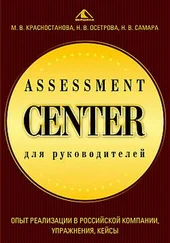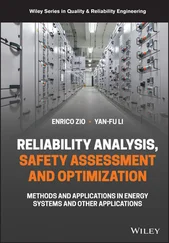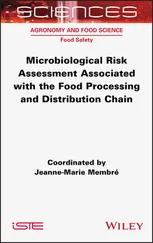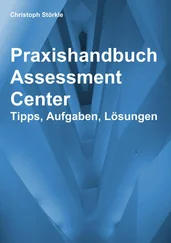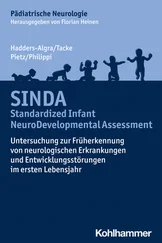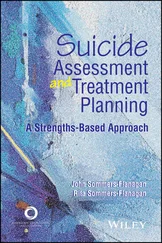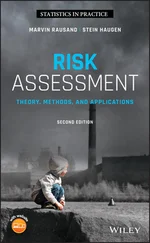Georgi Popov - Risk Assessment
Здесь есть возможность читать онлайн «Georgi Popov - Risk Assessment» — ознакомительный отрывок электронной книги совершенно бесплатно, а после прочтения отрывка купить полную версию. В некоторых случаях можно слушать аудио, скачать через торрент в формате fb2 и присутствует краткое содержание. Жанр: unrecognised, на английском языке. Описание произведения, (предисловие) а так же отзывы посетителей доступны на портале библиотеки ЛибКат.
- Название:Risk Assessment
- Автор:
- Жанр:
- Год:неизвестен
- ISBN:нет данных
- Рейтинг книги:4 / 5. Голосов: 1
-
Избранное:Добавить в избранное
- Отзывы:
-
Ваша оценка:
- 80
- 1
- 2
- 3
- 4
- 5
Risk Assessment: краткое содержание, описание и аннотация
Предлагаем к чтению аннотацию, описание, краткое содержание или предисловие (зависит от того, что написал сам автор книги «Risk Assessment»). Если вы не нашли необходимую информацию о книге — напишите в комментариях, мы постараемся отыскать её.
Explore the fundamentals of risk assessment with references to the latest standards, methodologies, and approaches Risk Assessment: A Practical Guide to Assessing Operational Risks
Risk Assessment: A Practical Guide to Assessing Operational Risks
Risk Assessment — читать онлайн ознакомительный отрывок
Ниже представлен текст книги, разбитый по страницам. Система сохранения места последней прочитанной страницы, позволяет с удобством читать онлайн бесплатно книгу «Risk Assessment», без необходимости каждый раз заново искать на чём Вы остановились. Поставьте закладку, и сможете в любой момент перейти на страницу, на которой закончили чтение.
Интервал:
Закладка:
9 EPA: Risk Management Programs for Chemical Accidental Release Prevention. http://www.epa.gov/emergencies/content/lawsregs/rmpover.htm
10 EXXONMOBIL’S OIMS. https://corporate.exxonmobil.com/en/energy‐and‐environment/tools‐and‐processes/risk‐management‐and‐safety/operations‐integrity‐management‐system(accessed May 2020).
11 Guidelines for Hazard Evaluation Procedures, Second Edition with Worked Examples. New York: Center for Chemical Process Safety of the American Institute of Chemical Engineers, 1992.
12 ISO 12100‐1 (2003). Safety of Machinery – Basic Concepts, General Principles for Design; Part 1. Basic Terminology, Methodology. Geneva, Switzerland: International Organization for Standardization.
13 ISO 12100‐2 (2003). Safety of Machinery – Basic Concepts, General Principles for Design; Part 2. Technical Principles and Specifications. Geneva, Switzerland: International Organization for Standardization.
14 ISO 14121 (1999). Safety of Machinery – Principles for Risk Assessment. Geneva, Switzerland: International Organization for Standardization.
15 Manuele, F.A. (2020). Advanced Safety Management: Focusing on Z10. 45001 and Serious Injury Prevention, 3e. Hoboken, NJ: Wiley.
16 MIL‐STD‐882E (2012). Standard Practice for System Safety. Washington, DC: Department of Defense. https://www.dau.edu/cop/esoh/DAU%20Sponsored%20Documents/MIL%20STD%20882E%20Final%202012%2005%2011.pdf
17 NIOSH: Howard, John, M.D. eNews Volume 17, Number 11. Science to Assess Workplace Hazards: NIOSH Practices in Occupational Risk Assessment, March 2020.
18 OSHA’s Rule for Process Safety Management of Highly Hazardous Chemicals, 1910.119. Washington, DC: Department of Labor, Occupational Safety and Health Administration, 1992.
19 Prevention and Control Strategies. OSHWIKI at https://oshwiki.eu/wiki/Prevention_and_control_strategies.
20 Risk Management Programs for Chemical Accidental Release Prevention, 40 CFR Part 68. Washington, DC: Environmental Protection Agency, 1996.
2 Risk Assessment Standards and Definitions
Bruce Lyon1 and Bruce Hollcroft2
1 Brown & Brown
2 PayneWest Insurance, A Marsh & McLennan Agency LLC Company
OBJECTIVES
Introduce the Need for Risk Assessments
Review Compliance Standards that Require Hazard Determination and Analysis
Review Consensus Standards that Prescribe Risk Assessment
Define Key Risk Assessment Terminology
2.1 Introduction
The single‐most important component within the operational risk management process is the identification, analysis, and assessment of risk. Without this element, there is little hope of understanding and managing risk. The purpose of risk assessment is to identify and analyze risk sources (hazards) and assess their risks so that management can properly avoid, reduce, and manage operational risks.
Risk assessment is a discipline that must be learned, practiced, and executed on a consistent basis to effectively anticipate and identify, analyze, and evaluate in order to manage risks. As further explained in this text, risk assessment is an essential component of an effective operational risk management system used to identify, analyze, and evaluate risks in the workplace.
There is a growing awareness for the significance of risk assessments with the development of standards, guidelines, and practices requiring or advocating formal risk assessments. The focus of this chapter is to provide the reader with an understanding of key standards and guidelines prescribing operational risk assessment for organizations, and their importance in shaping the safety, health, and environmental professional’s role in occupational safety and health. Key terms and definitions for risk assessment and management are reviewed and explained in context of the safety, health, and environmental professional’s responsibilities.
2.2 Risk Assessments and the Safety Professional
Fundamentally, the safety profession has long recognized the importance of managing hazards and risk through proper identification, assessment, and control. This is reflected in the standards, guidelines, and best practices found in various industries and business segments such as environmental, financial, medical, and nuclear, among others that require or recommend risk assessment. Some of these business segments are covered by regulatory compliance requirements, specific to their industry.
In the first chapter, an addendum can be found listing standards, guidelines, and initiatives that have been established since 2005, which require or promote the use of formal risk assessments. A review of these standards and guidelines reveals that there are similarities and differences in the approaches taken by their drafters. Some are industry specific, while others apply across all industries. The message they give is clear: risk assessment is important, and safety professionals are expected to be knowledgeable and skilled in their application.
To avoid professional liability risk, it is important for safety professionals to be knowledge of current applicable standards and best practices. In addition to regulatory standards, consensus standards such as ANSI/ASSP Z590.3, ANSI/ASSP/ISO 45001, and ANSI/ASSP/ISO 31000 considered best management practices (BMPs) should be used and recommended by safety professionals. In the event of an accident, compliance alone does not protect organizations or individuals from legal actions, especially if there is a known consensus standard available that could have prevented or reduced the risk. In such cases, “foreseeability” comes into play.
Foreseeability is a legal theory which states that someone is responsible for causing another person’s injuries if they were aware that their actions may have detrimental effects, did not change these actions or make the necessary adjustments, as well as causation between their action and the injury. For instance, a safety professional may be asked to testify in a legal case regarding their knowledge of current consensus standards that have relevance to the incident. The question might be “Are you aware of any standards related to this issue?” If the answer is “No,” the safety professional is discredited. However, if it is “Yes,” the very next question might be “Why didn't you apply the BMPs recommended by the standards?”
It has become clear that relying on a compliance‐based approach is no longer adequate. While being compliant is necessary and required by law, it only establishes the minimum level of acceptability. A risk‐based approach takes a deeper dive to truly understand the cause of injury/loss and encourages organizations to proactively assess their risks.
2.3 Key Standards Requiring Risk Assessments
In Europe, Australia, New Zealand, Canada, and other parts of the world, occupational risk assessments have become a common practice. This is largely due to the fact that these countries have national standards requiring risk assessments in the workplace. For instance, in the United Kingdom, the Health and Safety Executive (H&SE) has legally required all employers with five or more employees to perform risk assessments since 1999. Similar requirements are found in other countries such as Australia and New Zealand.
However, few risk assessments are mandated in the United States, with the exception of the Occupational Safety and Health Administration (OSHA) 29 CFR 1910.119 Process Safety Management of Highly Hazardous Chemicals standard, and the Environmental Protection Agency (EPA) 40 CFR Part 68, Risk Management Plan standard. Other OSHA standards contain requirements for hazard determination, and interpretations that suggest analysis and in some cases, “assessment” such as 1910.132, Personal Protective Equipment and hazard assessments; 1910.178, Control of Hazardous Energy Sources ; and 1910.146, Permit‐required Confined Space Entry .
Читать дальшеИнтервал:
Закладка:
Похожие книги на «Risk Assessment»
Представляем Вашему вниманию похожие книги на «Risk Assessment» списком для выбора. Мы отобрали схожую по названию и смыслу литературу в надежде предоставить читателям больше вариантов отыскать новые, интересные, ещё непрочитанные произведения.
Обсуждение, отзывы о книге «Risk Assessment» и просто собственные мнения читателей. Оставьте ваши комментарии, напишите, что Вы думаете о произведении, его смысле или главных героях. Укажите что конкретно понравилось, а что нет, и почему Вы так считаете.

